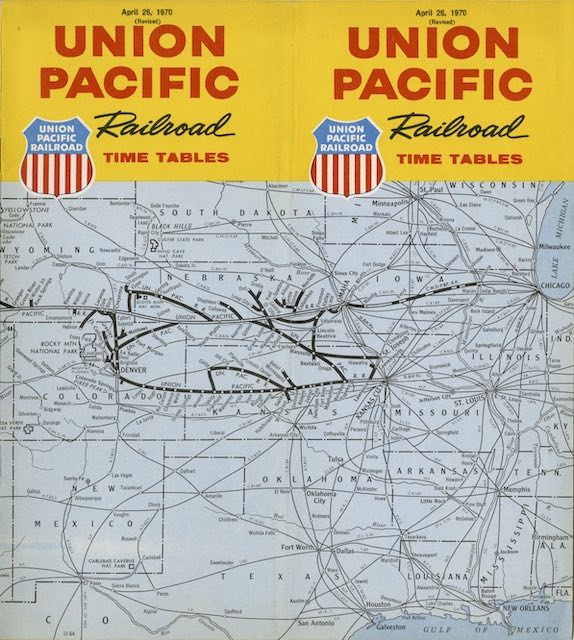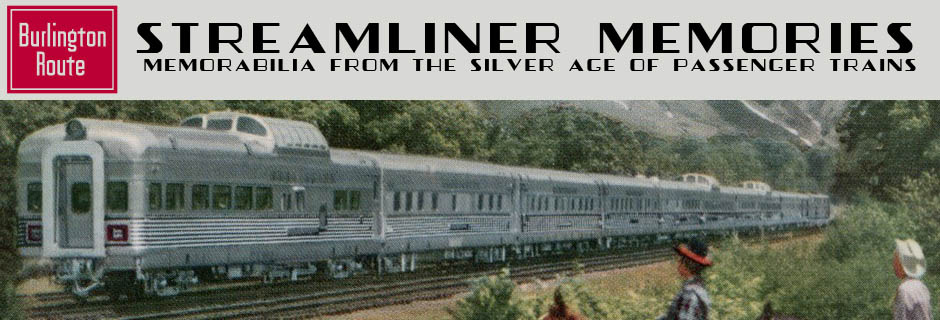Although issued a year before Amtrak, this is the last Union Pacific passenger timetable I can find. Union Pacific managed to fill 24 pages, but much of it was fluff, with some trains being repeated on five or more pages. While important cities such as Portland still had three Union Pacific trains a day, podunk towns like Chicago and Los Angeles only had one.
 Click image to download a 13.6-MB PDF of this timetable.
Click image to download a 13.6-MB PDF of this timetable.
The City of San Francisco really didn’t exist any more, at least not on Union Pacific. Instead, two coaches and a sleeping car were taken off the westbound City of Los Angeles at Ogden three times a week and added to Southern Pacific’s tri-weekly City of San Francisco. In all, I count nine Union Pacific pure passenger trains, including Salt Lake City-Butte, Portland-Seattle, and Hinkle-Spokane, plus four mixed trains in Nebraska.
The biggest puzzle is what happened to the Portland Rose. That it existed at all was amazing, since it gave Portlanders two daily Union Pacific trains to the east while Los Angeleans had one and San Franciscans just three a week. But in 1969, the Rose went all the way from Portland to Kansas City, exchanging cars with unnamed trains 5 & 6 to Los Angeles in Cheyenne.
In 1970, the Rose, trains 17 & 18, only went between Portland and Denver. Similarly numbered trains 117 and 118 went between Denver and Kansas City. Westbound train 117 from Kansas City inconveniently arrived in Denver 3-3/4 hours after the Portland Rose had left Denver. Eastbound train 18 arrived in Denver 5-1/2 hours after 118 departed. So there really was not much point taking the Rose to or from anywhere east of Denver.
Did UP reschedule these trains to discourage ridership? More likely, there weren’t many through riders and UP realized that the revised schedules might attract more short-distance riders as they made 117 and 118 into daylight trains, counterbalancing the overnight City of Kansas City.

UP didn’t actively try to discourage passengers that I am aware of. The Portland Rose may not have had its mail contracts severed in 1967 as most were so it’s possible that’s what kept it going for as long as it did. It’s also possible there was a sufficient ridership in southern Idaho at stations like Boise and Pocatello that UP felt it unnecessary to drop the Rose. The COP went through Boise at rather inconvenient hours (unimportant if you’re riding the entire PDX-CHI distance).